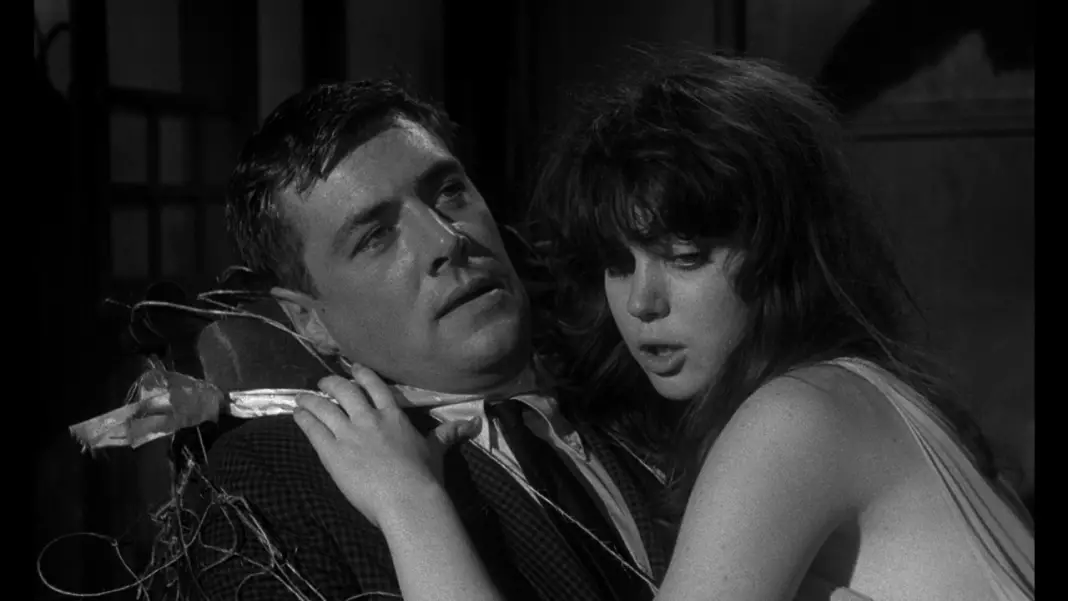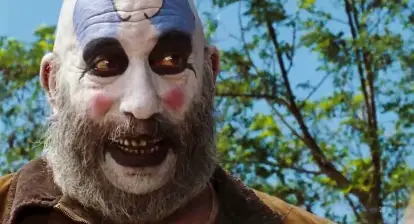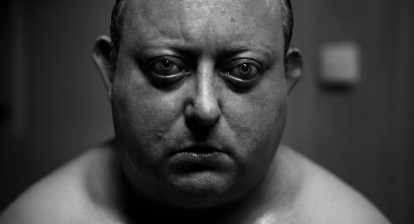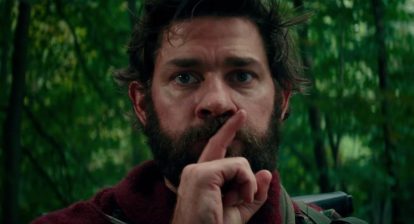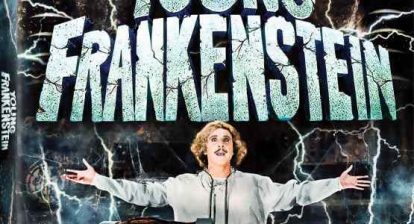Horror movies come in all shapes, sizes, and even colors. As we all eagerly anticipate the next new thing coming in genre film, it’s important that we not forget where it all started. In this series, Michele Eggen takes us back to the classics, and reminds us how effective Horror in Black and White can really be. This week, she spotlights the black comedy Spider Baby.
There are many ways one could describe director Jack Hill’s 1968 film Spider Baby–odd, quirky, unique, macabre, weird. Of course, the film is definitely all of these things, but there really is so much more to it than that. The charming qualities of Spider Baby’s comedy and heart are what have elevated it to cult film status. It has been nearly 50 years after its initial release, and the movie is finding more and more fans all the time. It’s sad to think that future generations might not have been able to see the movie at all, or at least not in the way it was supposed to be seen. After discovering that poor quality bootleg video cassettes of the film were floating around, Hill decided to get the film restored himself. With excellent DVD and Blu-Ray releases now available, Spider Baby is easily accessible for those looking to descend into the madness of a lovable, murdering cannibal family.

Subtitled as “The Maddest Story Ever Told” (a dig on The Greatest Story Ever Told), Spider Baby introduces us to the Merrye family, who all suffer from an affliction exclusive to their clan–the Merrye Syndrome. The result of inbreeding, it is a form of mental regression that causes the victim to revert to a more childlike state the older he or she gets. With the bodies of adults and the minds of children, the violent tendencies of the Merryes are very dangerous. The three surviving children–Elizabeth, Virginia, and Ralph–are cared for by the family chauffer Bruno who has until now managed to keep them under control and isolated. When uninvited guests come to the Merrye house to sue them for the estate, they get tangled in the demented family’s web of murder.
The opening song/poem read by Lon Chaney Jr is the perfect tone-setter for the movie. The score is as upbeat as it is sinister, and goes along wonderfully with the lyrics that mention ghosts and vampires and a cannibal orgy (the film’s original title). It is read almost like a children’s nursery rhyme, and with Chaney’s hearty laughter punctuating certain lines, you can’t help but have a smile on your face. The great thing is that the movie never loses this tone. It really is one of those examples of a way to perfectly blend dark comedy and true horror that makes the audience react in ways that they wouldn’t under other circumstances. There is some crazy stuff going on when you really think about it, but it probably doesn’t bother people as much because of the way it’s portrayed.

This is mostly achieved by the characters and the different perspectives that they have on the situation. Bruno does omit facts, but never really lies to anybody about the severity of the children’s condition. Emily Howe, a cousin of the Merryes, and her lawyer Mr. Schlocker are convinced that the whole thing is some sort of setup to scare them away from trying to take their money. Peter, Emily’s brother, doesn’t seem to care either way, and is just hilariously accepting of all the craziness. Schlocker’s adorable assistant Ann acts similarly. The best example of all this is the dinner scene, where the children have prepared a lovely feast of stray cat, mushrooms, bugs, and dried grass. Bruno is trying his hardest to make it all seem ordinary but he just can’t get the right response from anybody. This scene also features a nice in-joke about Chaney’s most famous role when Ann imitates the Wolfman while looking right at him.
Without question, the cast of Spider Baby is fantastic. Carol Ohmart is perfect in the role of the rigid Emily, though she does get an opportunity for some sex appeal later on. Karl Schanzer is your typical scumbag lawyer; however, he does get a couple of great moments of awkward humor. It’s easy to see why the girls take a shine to Peter, played by Quinn Redeker, because of lovable cluelessness. Sid Haig’s oddness shines in one of his earliest roles as the maniacal man-child Ralph. Beverly Washburn also gives a deliciously eerie child-like performance as Elizabeth. The heart and soul of the movie lies in the great Lon Chaney Jr’s portrayal of Bruno. His performance shows the faithful chauffer’s unwavering loyalty to the Merryes, but also his conflicting feelings of love and pain for them. He genuinely loves them and accepts them, even when they do bad things.

But the real star of Spider Baby is Jill Banner as Virginia. It’s hard to believe that Banner had almost no experience as an actress at the time of filming, because she absolutely owns the character and all her idiosyncrasies. Virginia loves spiders–playing with them and eating them–and her favorite activity is to “play spider” with other people. She catches victims like bugs in her web made out of rope, and then stings or bites them with two butcher knives. Banner’s physicality in these scenes especially is perfect, but even in the background, she just feels very natural and real in front of the camera. She never makes a wrong move or gives a wrong look, and is spell-binding to watch.
What has been interesting about revisiting these black and white films and watching interviews with the filmmakers is seeing how important the choice of black and white really was to them. Director of photography Alfred Taylor says in one of these interviews rather adamantly, “I don’t like color at all. I love black and white the best. There’s more artistry in shooting black and white than color. Anybody could shoot color.” This artistry is definitely present in Spider Baby. It may have been a low-budget horror film, but the photography looks absolutely high-quality, and only gets better as the movie progresses. He often lights the background more than the foreground, which really sets up some creepy looking shots once night falls on the house. The best shot in the movie is of Virginia and Elizabeth standing at the top of the stairs leading into the basement. Their bodies and faces are completely black, with only a soft halo of light around their heads, showing off their now wild hair as they are on the hunt.
In regards to Spider Baby, Jack Hill says in an interview that he was jealous of all his friends that at the time were making big studio pictures while he was making what he refers to as “throwaway” movies. Now, those big films have been forgotten and his little cult film is considered a classic. It’s not hard at all to see why Spider Baby is so special to people–I fell in love with it the first time I saw it, and that love hasn’t waned since. Some see it as a perfectly macabre comedy. Others see a message of unconditional love, no matter the circumstances. Spider Baby is a wonderful film no matter how you see it, and is another example of why I love Horror in Black and White.
